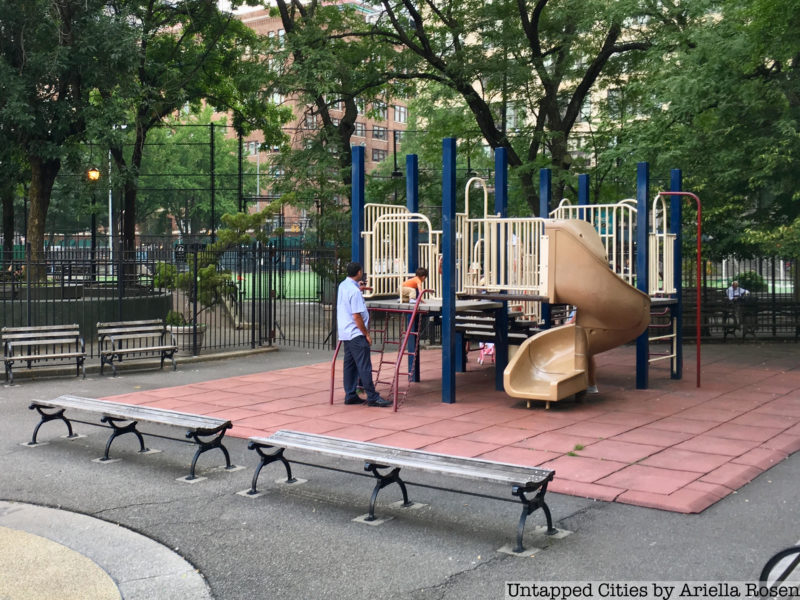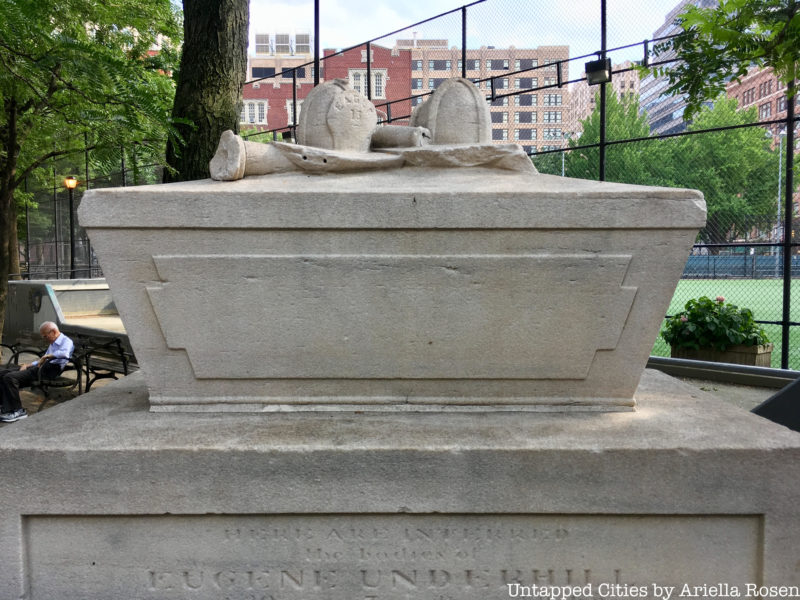3. James J. Walker Park

From around 1800 to 1851, John’s Chapel of Trinity Church laid approximately 10,000 people to rest in St. John’s Burying-Ground, which occupied the land between Hudson, Leroy, and Clarkson Streets in Manhattan’s Greenwich Village. The graveyard was a favorite spot of Edgar Allen Poe, who lived nearby in a wooden house at 113 Carmine Street in the 1830s. It was a quiet, restful spot, and Poe liked wander between the graves as he thought.
In 1895, the New York City Parks Department acquired the land with plans to turn it into a public park. Family members were given a year to remove their dead, but the vast majority of the bodies were never claimed. Hudson Park (renamed James J. Walker Park in 1947) opened in 1898. Playground equipment was added in 1903 at the urging of Charles Stover and the Outdoor Recreation League, making it one of the first municipally funded playgrounds in the city.
By the 1940s, the playground had been expanded, a pool had been dug, and a baseball diamond had been installed. Where the tombstones once stood, children now climb on jungle-gyms and gather for pickup games of soccer. The only indication of the park’s history as a cemetery and of the bodies that have rested beneath the park for hundreds of years is a monument erected in 1834 by Eagle Fire Engine Company No. 13 to honor the memory of Eugene Underhill and Frederick A. Ward, who died on their first day on the job when a building fell on top of them.






